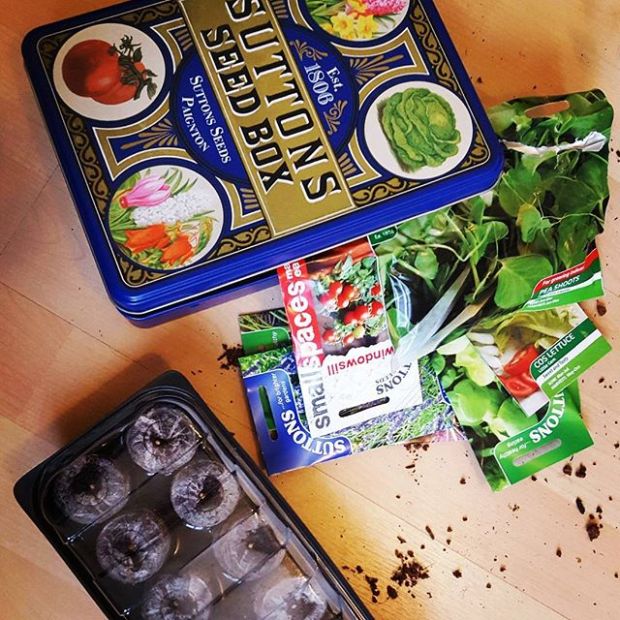Hopefully my gardening efforts will produce a surplus of produce. Probably not this year when the only space I have to grow is three windowsills, but in the future when I have more space. Combining this with my love of traditional skills and learning how to preserve food seems like an obvious step forward. I can already make a fairly decent jam (I made a few jars in autumn with some blackberries I gathered from a nearby park), I have no experience however, with fermenting food. I really enjoy the taste of sauerkraut and my veg box this week contained a cabbage, so it seemed like a good place to start.
I found a recipe online that used both cabbage and leeks, which were also in this weeks veg box. It also used a coconut oil seal and a regular Kilner jar, so no need for expensive equipment I may never use again.
I chopped up the cabbage and leek into small pieces, added salt and mashed with the end of a wooden rolling pin until the juices started to release from the veg. I let it sit for a few hours before putting into the jar and mashed again, pressing the veg down until it was completely submerged in the brine – apparently this is important so that mould doesn’t form. Then I added a layer of coconut oil which solidified to form a seal (hopefully meaning harmful bacteria can’t get it) and loosely closed the lid. It seems to be working so far – I hope it goes well and I haven’t wasted all that veg for nothing!
I can’t wait until it’s autumn and I can go blackberry collecting again – I might try making blackberry wine as well as jam this year!
What do you preserve and how do you do it? If you have and tips or ideas for a complete beginner, let me know!






You must be logged in to post a comment.